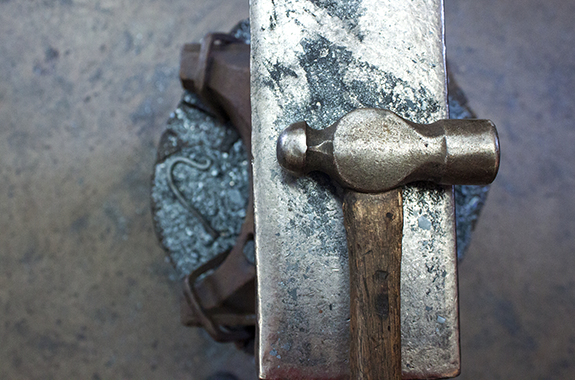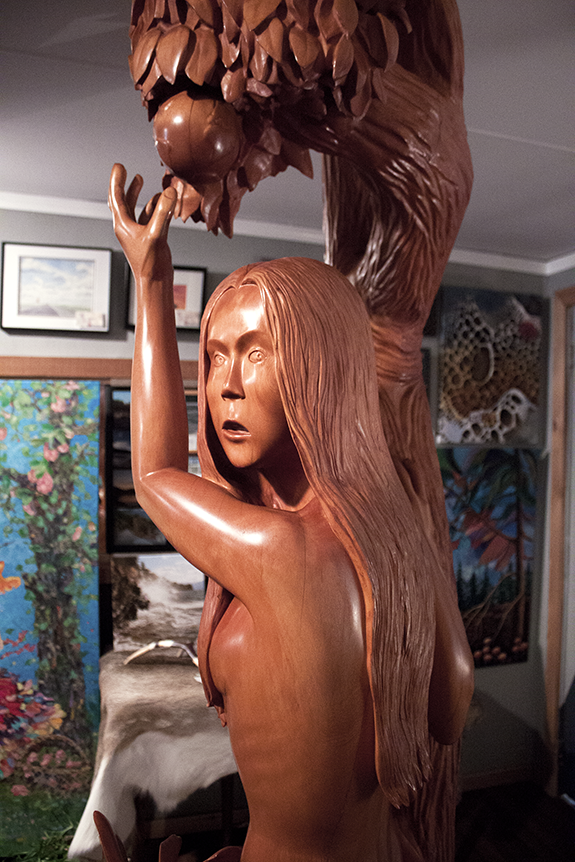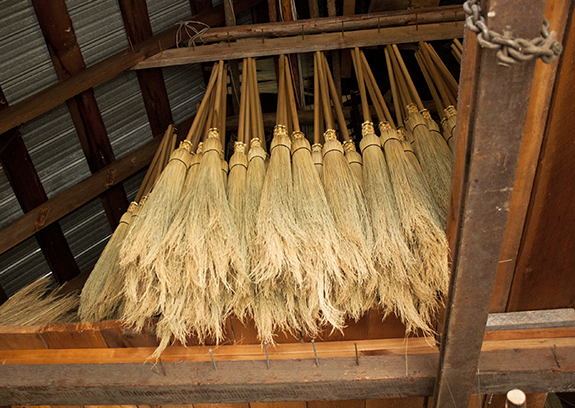Anna & Yu
Meet two professional skiers who discovered more than just incredible slopes in BC—they also found a place to call home.

The ferry closes in.
I always enjoy the trip to Crawford Bay. From terminal to terminal, the ride is drenched in scenery. It’s also the longest free ferry trip in the world, so I have time to sit in the sun on the upper deck and make good use of my camera.
Most times, I’m outfitted with my boyfriend’s truck on these trips. Here in the West Kootenay region, there are many forest service roads that take you into places where you’re more likely to see grizzlies than other people. But today, I was headed into town.
Make that a village. Crawford Bay has roughly 350 people, and that number is dependent upon the season. In high season, this place comes alive. Chalk it up to the talent—the community is as heavy with artisans as the ferry ride is with scenery.
The main street through Crawford Bay is door-to-door local art—weaving to woodworking. During my Friday visit, I stopped by eight different shops. Each person behind the desk (or behind the loom) was full of stories, and the history of their craft. And they all possessed one thing equally: passion.
It’s apparent in their handiwork.

The loom in action.
Janet knows her loom inside and out. She also knows the history of weaving inside and out. She showed me ancient weaving tools, talked about the way the fibres were created, and shared how she taught her mother to weave. She told me how women within the community were brought together under her roof, to blend their various skills and create the products she shelved and hung around her store.
The yarns she uses, stacked in cubbies from floor to ceiling, are more beautiful than any wallpaper. Their colours echo throughout the pieces in her shop, a straw bale structure that Janet’s husband designed and built himself.
Back at her loom, it was incredible to listen to her describe how one piece of fabric — such as the one she was currently (and so painstakingly) creating — would eventually be used. As pieces are cut, each progressively smaller piece is turned into something ingeniously creative. Even more impressive is that every part of each product’s journey is completed in-house by Crawford Bay women, from weaving to binding.

A rainbow-coloured wall of yarn.

Colourful wraps, the finished products.

Cloth being woven.

Hand-crafted saucer and cup.
The first thing that caught my eye was a subtle tint of gold.
Examining the pieces Lea made, I saw a mix of styles; some lent themselves to a rustic cabin feel, others were Asian-inspired, and still others were cheery and playful. Natural light and warm, incandescent light further brought out differences as pieces were lit by one or the other, depending on where you were standing.
There was the Ramen bowl, with chopsticks tucked neatly through the lip, and the piece with aqua engravings, reminding me of Maya carvings I’d seen in Mexico in my childhood. But it was a glaze application I’d never seen used before that drew my attention the longest. Only the slightest shimmer of gold was applied over a cup and saucer duo that flirted with the light — and my eye — as I walked among the various other pieces.

Ramen bowl with chopsticks.

Ornate pitcher.

Bear bowls.

Enameling jewellery.
The details Helene works with are tiny.
A scattering of glass rods, hardly thicker than a strand of wire; miniature spoons and sieves; pots of coloured crushed glass as fine as sand: From these she decorates metal bases before sliding them carefully into a glowing kiln next to her desk.
Helene works quickly to keep the kiln’s internal temperature steady. Using the tip of a long metal “stick,” she drags the colours of the now-melted glass, shaping it into swirls and zig-zags.
Against the warm glow, it’s mesmerizing.
She draws the pieces out, and as they cool, the colours of the enamelled glass change until they are hardened into their final form and colour. The pieces she creates may adorn anything from necklines to iron works created by her neighbours at Kootenay Forge.

The glow of the kiln.

The many colours of glass enameling.

Vibrant necklaces.

River stone rings on display.
Galadriel’s shop was glittering.
Not in the way of diamonds, but something much more real feeling. Glass display cases, lit to showcase her fine metalwork, sat alongside wooden shelves stacked with trunks of trees and adorned with rings. The collections felt like different aspects of a single personality.
I spent forever in there getting to know each piece. I wanted to photograph every aspect of that personality.
Galadriel’s creativity seemed boundless. She created delicate designs from metals; she collected smooth, impossibly flat river stones from the nearby lake and fashioned them into pendants; she designed the whole look of her shop to catch the eye and draw you in.

Copper arm band.

Scroll bracelet.

Fringe necklace.

Black bear carving.
By the time I finished talking with Merv, I felt like we were old friends.
Walking into the shop, you’re greeted by his wife, Donna, and surrounded by Merv’s work sitting side-by-side with the work of local artists who don’t have shops of their own. It’s the kind of community spirit I’ve noticed throughout the village shops, but here in particular is a display of Crawford Bay talent. There’s a generosity in that. And as soon as you speak with either Donna or Merv, you know exactly where that generosity comes from.
Merv leads me through to his woodcarving area. It’s filled with tools, oils, and figures in various states of completion. There’s an eagle in flight, a sweet owl looking surprised by my visit, and a little black bear with a curious nose sniffing up toward me. The carvings, he says, are decided by the timber. As he carves, he lets the wood dictate what it will become.
Some become larger-than-life depictions of human struggle and human beginnings, such as Eve picking the forbidden fruit. These are showstoppers, glowing with an internal warmth, Merv’s refined handiwork evoking powerful emotion.

Human rights carving.

Eve’s crucial moment.

Owl carving.

So many broom varities.
You might notice a little Harry Potter in here.
This family-owned company was tasked with crafting 800 brooms of various sizes to accompany two releases of the Harry Potter book series, Harry Potter and the Order of the Phoenix and Harry Potter and the Deathly Hallows.
Needless to say, the team has talent.
It hadn’t occurred to me that brooms could be beautiful. But in the hands of skilled artisans, who understand the history of their craft and who use time-honoured practices in shaping the broom and selecting the materials, they are works of art.
Inside the shop, which doubles as a studio, brooms in various stages of completion hang throughout an old barn. In the rafters, broomcorn dries after being soaked. In the back, it’s stacked and sorted. Near the front, an old-fashioned vice holds the broomcorn tightly while it’s handwoven together. Finished pieces included some with handles made of twisting manzanita, and others with straight, down-to-business handles.
I learned about the history of broom making, passed down from one generation of broom makers to the next.

Weaving a new broom.

Selecting the broomcorn.

Drying the broomcorn.
Visiting all these shops will take you well through breakfast and lunch. Stop in at the Black Salt Cafe — also located right on the main street — for some creative dishes and flavourful mouthfuls.

Veggie croissant.

Falafel pita.